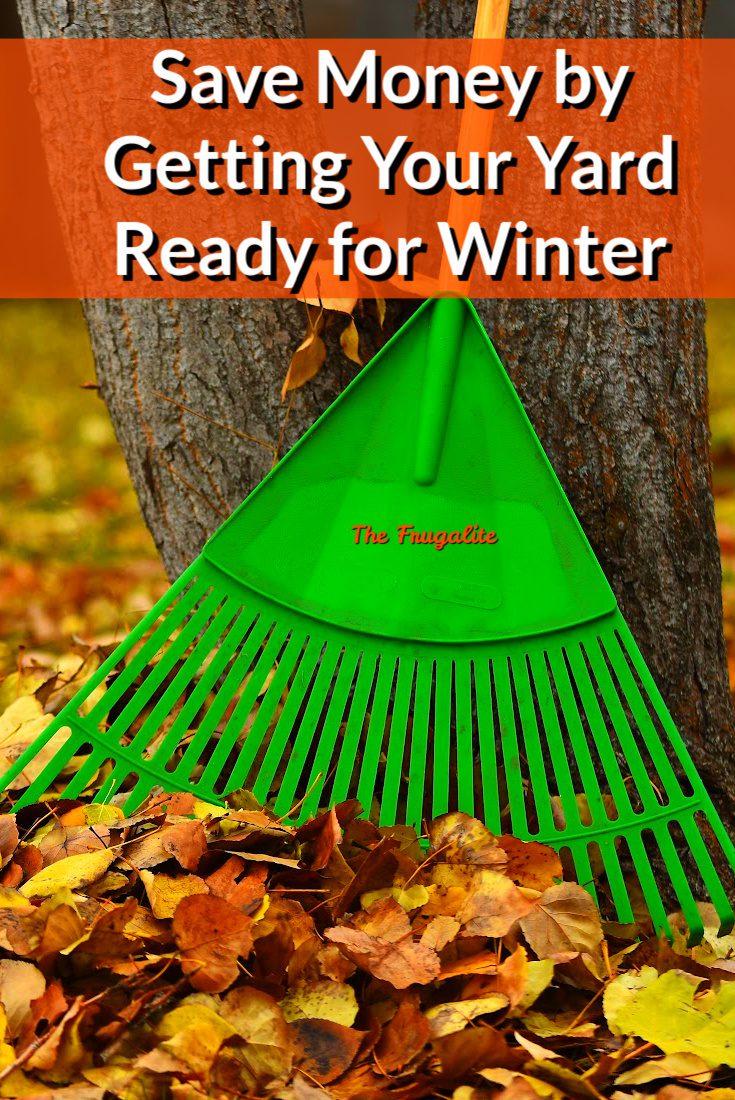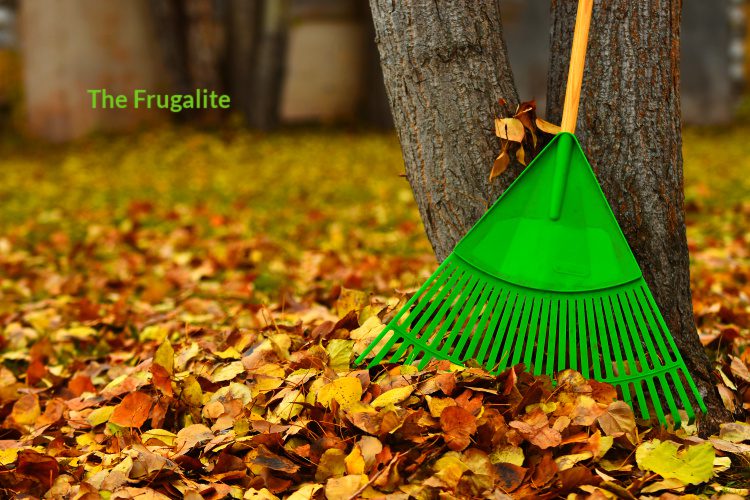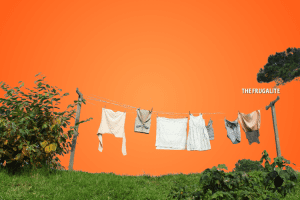(Psst: The FTC wants me to remind you that this website contains affiliate links. That means if you make a purchase from a link you click on, I might receive a small commission. This does not increase the price you’ll pay for that item nor does it decrease the awesomeness of the item. ~ Daisy)
Life will be better in the spring if you take care of a few outdoor tasks in the fall before the snow flies. Getting your yard ready for the winter gives you the perfect opportunity to enjoy the crisp autumn air while saving yourself work, time, and money once everything thaws out.
Plus you can get the whole family involved and spend a nice fall day outside.
Why you should be getting your yard ready for winter
Wondering why you should be getting your yard ready for winter? Here are 3 good reasons for going outside and getting things done.
- These maintenance tasks can help save you money by keeping your home, yard, and tools in good repair. No one wants to be forced to buy new tools or hoses in the spring because they neglected the ones they already had.
- Even more costly, there’s nothing worse than seeing a leak or damage that could have been prevented by just a few simple steps.
- Finally, taking care of these issues can help to prevent injuries, both to yourself or someone else. Not only are you avoiding potentially costly medical bills, but you’re also reducing the potential liability of being sued if someone gets hurt on your property.
So, what tasks do you need to do to prepare for winter?
Here’s a quick checklist for getting your yard ready for winter.
Getting your yard ready for winter means taking care of chores that will be more difficult if you wait. Below, find 9 tasks that will help you get your property prepped before the snow flies and the mercury drops.
- Rake your yard. It’s a lot easier to clean up those leaves before they’re soaking in the mud after the winter thaw. If you’re looking for something to do with those leaves, check out this article.
- Plant perennials. This is the time to plant bulbs like tulips, daffodils, and daylilies for a beautiful spring.
- Use the leaves for mulch. Instead of bagging them up and throwing them away use them for mulch in your vegetable gardens and flower beds. I like to tuck them in close around the bottom of my shrubs and perennials, especially the younger plants, to help them overwinter better. You can also lay the leaves over your garden beds.
- Remove any rotting vegetation. If you have rotten fruit on a fruit tree or rotting veggies in your garden, take the time to remove it so it doesn’t contaminate your soil or next season’s garden.
- Cover your winter vegetables. Use cold frames, hoop houses, or tarps to cover up your fall and winter produce and protect it.
- If you have a compost bin, throw in some leaves. Compost requires a specific chemical balance. Be sure to add nitrogen in the form of manure, bloodmeal, cottonseed meal, or bone meal. The rule of thumb is 5 parts leaves to 1-part nitrogen. Each time you add something to your compost pile, give a little stir. I keep a rake handle nearby for stirring things up. Things are decomposing when they’re giving off a lot of heat. If there isn’t any heat in there, your composting magic is not occurring.
- Once you’ve added mulch, cover your garden beds with a layer of cardboard. Then top that with heavy plastic held in place by bricks, chunks of wood, or cement blocks. Use inexpensive tarps or cut-up, heavy garbage bags for the top layer.
- Remove all debris from your walkways. Make sure to clear any place you’ll need to shovel (or walk) when the snow flies. When they’re covered in snow, items can become hidden which makes them a safety hazard to folks walking.
- Be sure you have a sturdy shovel and de-icing salt. You will be glad you have a shovel that doesn’t need repairs and the salt well before you need it. If your shovel isn’t in very good shape, check now to see if it can be repaired or whether it needs to be replaced.
- Clean up your garden tools and put them away. If they’re put away clean and dry, your tools will last much longer because they won’t rust and decay.
- Make sure to completely drain your hoses and sprinkler systems. If they freeze with water in the lines, it can cause them to crack when the temperature dips.
- Clean out your gutters. This will ensure that leaves don’t clog them. Gutters clogged with leaves and ice can cause them to break or can even make your roof leak, causing costly damage to your home.
An ounce of prevention…
You’ve all heard that saying, “An ounce of prevention is worth a pound of cure.” That’s why getting your yard ready for winter is so incredibly important. You’re preventing all sorts of problems.
What do you do when getting your yard ready for winter? Share your annual maintenance tips in the comments.












4 thoughts on “Save Money by Getting Your Yard Ready for Winter”
Great tips Daisy! I agree that it’s better to take care of things. If I take care of my assets, my assets take care of me. That’s true in everything from teeth to garden hoses.
I turn my fallen leaves into my beds for organic matter. Also, many bee species, such as bumbles, are ground nesters. I like to give them places to overwinter. I find it easier to let canes overwinter however, since it’s easier to pull them in spring.
I love my snow blower too. I’m getting older with desk jockey back problems, so shoveling isn’t as much fun as it used to be. So the blower it is. Time enough to do it the hard way when I have no other choice.
If you don’t have a porch, bring your snow shovel in and set it by the door, so it doesn’t get covered in snow during a storm. That way, you can begin your shoveling right there at the door to begin with.
When you clean your garden tools, use plain steel wool to scrub any rust off of them. Before you store them, rub some mineral oil over the metal and wood parts to protect them during the off season.
In addition to planting flowers, time to plant garlic in certain zones (or in my area, a bit late to be planting garlic. Climate change pushed back our first hard freeze almost a month.. sigh).
Caulking is another fall maintenance item (if it is still reasonably warm).
A sharp eye re: dead/dying trees, dangerous branches and/or trimming now that the trees are going dormant (if not already dead).
If you burn firewood, mark dead trees – especially those easily accessible once it snows. Gather sticks/small branches for kindling if you heat with wood. Start up the generator and let it run for a bit – nothing more frustrating than a generator that won’t start when needed.
I prefer to use calcium chloride rather than rock salt as my ice melter for several reasons – It works down to -62 degrees F. It generates heat when it comes in contact with water, making it work faster. It is less harmful to plants than rock salt. It will not hurt concrete, like rock salt will.